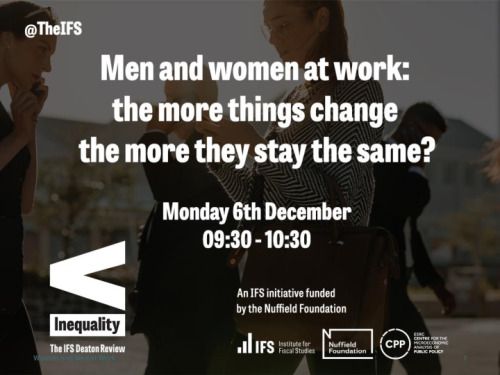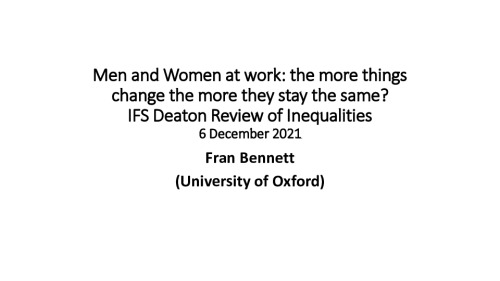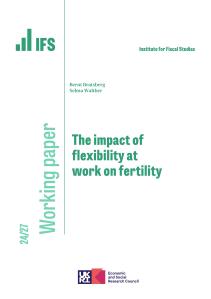Men and women have historically held very different roles inside and outside the household, and with respect to paid and unpaid work. These have influenced, and been shaped by, power relations between men and women and socialization into different roles by parents and communities. In recent decades we have seen major changes in gender norms within families and societies and in women’s political, social and economic roles - not least their mass entry into the labour force. And yet we still see huge differences in how men and women use their time and in their economic outcomes. After having children gaps in labour force participation and pay between men and women increase markedly and never close again, even if mother’s careers do pick up momentum again many years later once child-rearing is over.
This online event presented new evidence on economic inequalities between men and women. It investigated how far patterns of work and pay have changed over time, how this relates to changing education levels of men and women, and what the causes of the persistent gaps are. It asked whether and how policy can enable women’s careers and men’s caring roles, and reduce the risk of poverty among those who face interruptions in paid work. And it also reflected on what needs to be done to ensure the ability of women and men to enjoy fulfilling home and working lives, and the potential wider effects on society and the economy. The event drew on research undertaken as part of the IFS Deaton Review of Inequalities, funded by the Nuffield Foundation.














